Iguana iguana
—
Green Iguana
Also known as:
Common Iguana, Bamboo Chicken (Belize)
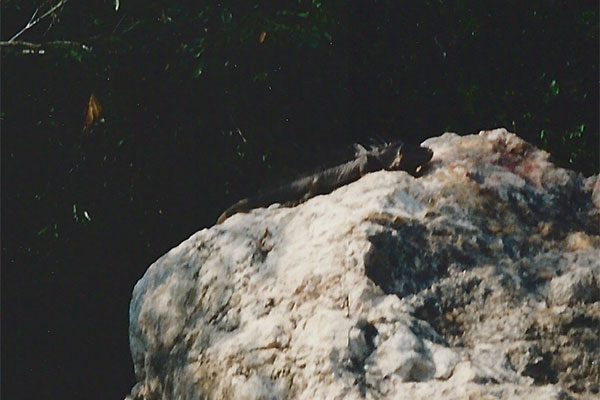
We saw several large iguanas hanging out on the shore of the Macal as our canoes drifted past. One was about 50 feet up in a cecropia tree, bobbing its head up and down to tell us intruders to get out of its territory. This one was on a rock right at the side of the river. I was hoping to get a decent picture of it as we drifted near, but it leapt into the water before we got too close.
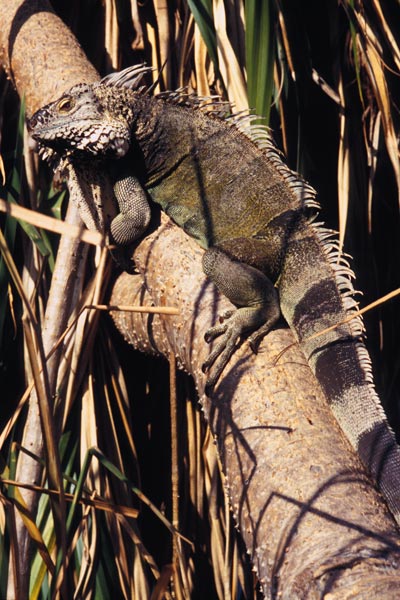
Fairchild Tropical Garden has a large population of green iguanas, most likely escapees and releasees from the pet trade and their descendants. We saw a dozen large adults in a few hours, nearly all in pairs. Most of them would crash off into the vegetation or dive into the water when people got anywhere near, but this fellow posed nicely for me.
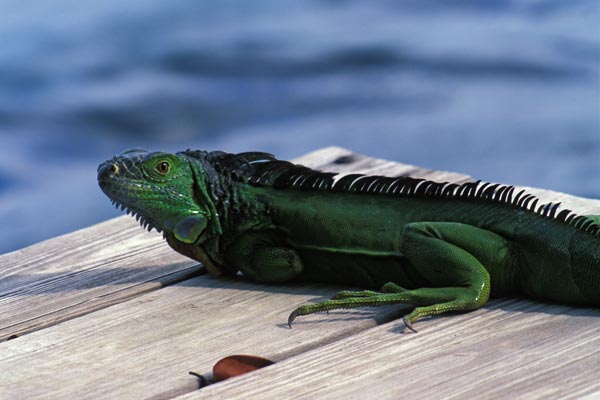
This lovely green Christmas iguana was lounging on a small dock in one of the numerous canals that criss-cross south Florida to increase the home values. It's missing the foot and foreleg on its front left leg. When it finally grew tired of me sneaking ever closer in the quest for photos, it calmly slipped over the edge of the dock, softly splashing into the water.
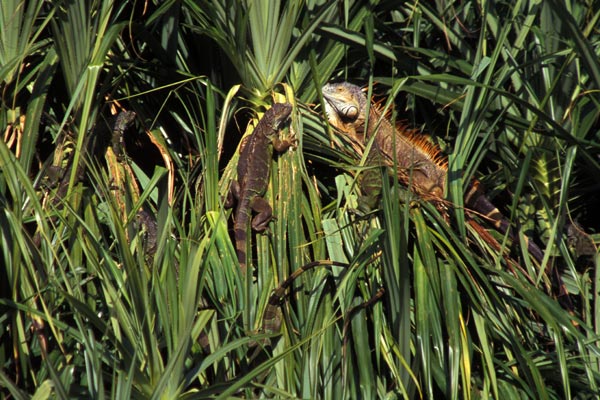
The iguana population at Fairchild Tropical Garden seems to have grown even healthier since the last time I visited. I saw numerous pairs of adult iguanas here and there, and one marvelous palm overhanging a lake housed at least 16 iguanas of various shapes and sizes. This photo shows one area of that palm. I count 7 iguanas in this picture. I had no idea iguanas were so social.
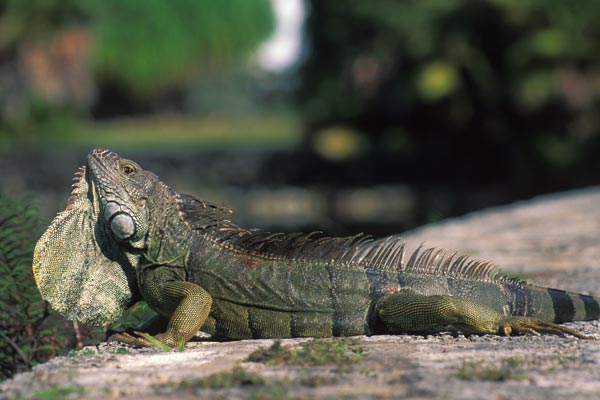
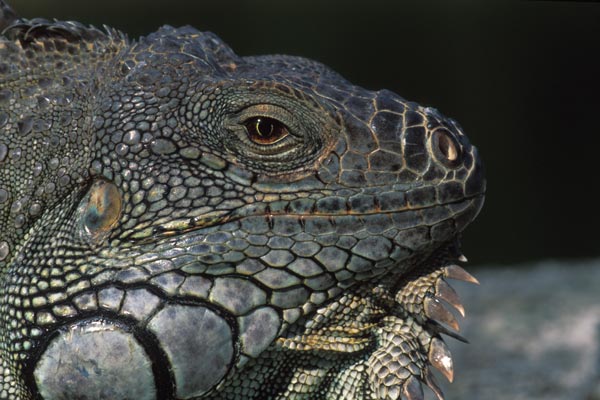
It's official: Fairchild Tropical Garden is now knee-deep in iguanas. This one was putting me in my place with its macho head-jerking, dewlap-displaying behavior.
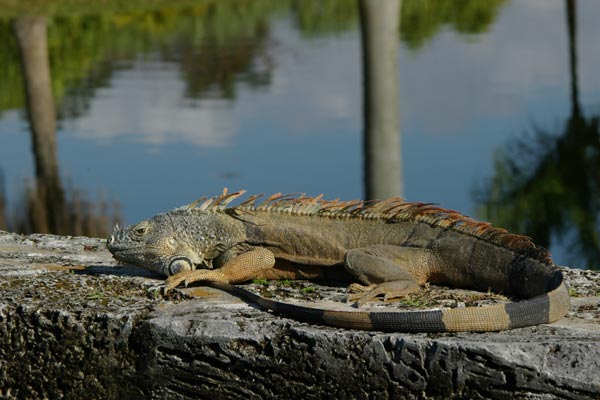
Whenever I'm in South Florida I stop in at Fairchild Tropical Garden for my iguana hit. Here's an early morning basker.
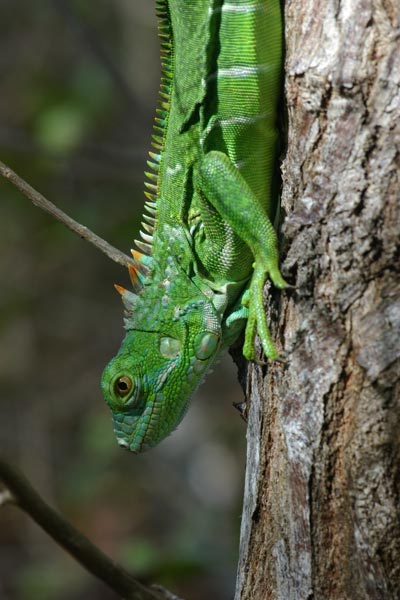
Bill Baggs park, on the southern tip of beautiful Key Biscayne, is another South Florida spot the green iguanas have made their own. This youngish iguana was just off one of the most popular walking trails, clinging vertically to a thin tree trunk.

The old zoo grounds at Crandon Park, also on Key Biscayne, have an iguana density that has to be seen to be believed. Not only are the Green Iguanas (like this large male hauled out on the shore of a meandering stream) cluttering the place up, but they are possibly even outnumbered by Gray's Spiny-tailed Iguanas.

Iguanas are very comfortable in water, and they often splash noisily into lakes and rivers to escape perceived danger. I don't know if this one had earlier escaped some perceived danger, but it didn't look very worried to me when I came across it lounging in a large shallow pond.
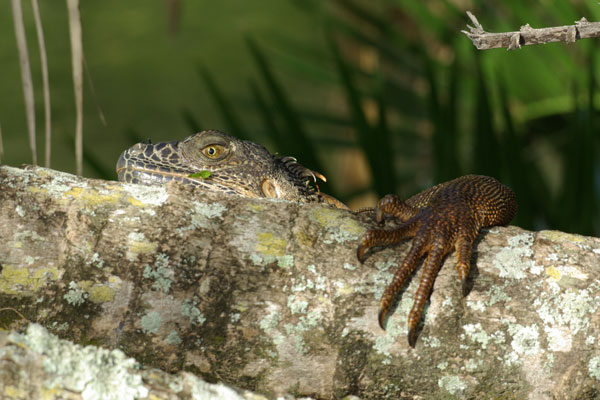
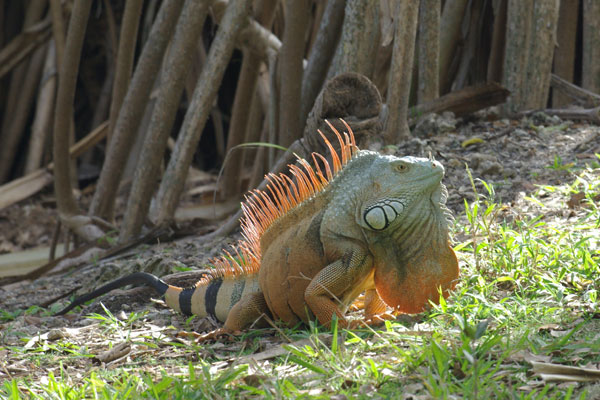
Are you tired of seeing iguanas at Fairchild Tropical Garden yet? I'm not.
The one at top was doing its best Boyd's Forest Dragon imitation, slowly rotating to hide behind the branch it was clinging to as I got closer.
The one below was in full macho male mode, bobbing its head and strutting about like he owned the place.
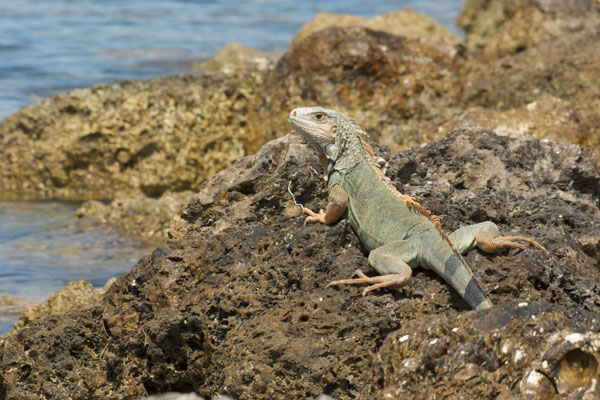
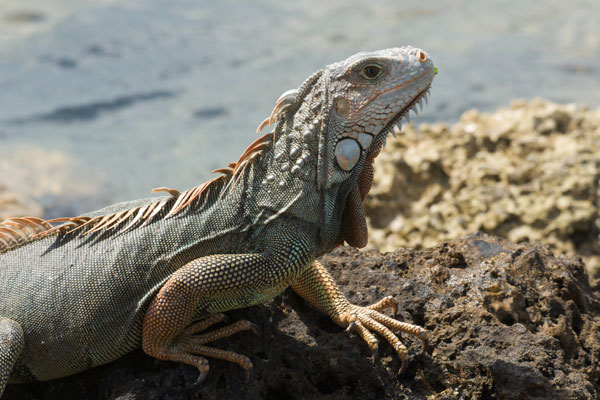
This ordinary green iguana was doing its best Galápagos marine iguana impression; it was basking on some oceanside rocks, warily keeping an eye on me as I got closer and closer for photos. When it had had enough of me, it quickly turned towards the water and leaped, tucking its legs in to perform a perfect dive and disappear into the sea.
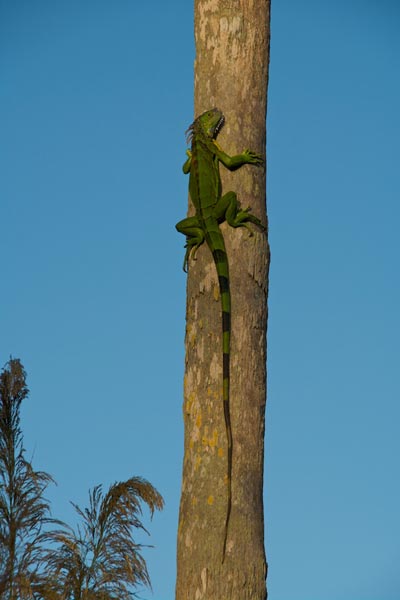
Those big lizards sure are good at climbing!

One of the small pleasures of south Florida is that whenever you're walking around for ten or more minutes, you can entertain yourself by counting lizards. Mostly you will be counting small non-native relatively nondescript brown anoles, but occasionally you will come across a huge non-native and quite descript green iguana.
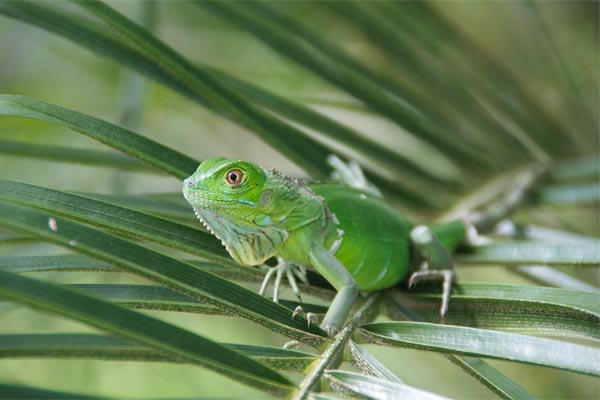
This little fella and a similarly youthful pal occupied a medium-sized palm whose fronds overhung an edge of Evergreen Lodge's poolside patio. During the couple of days in which we stayed here, we would periodically stop by and check up on them. It turns out that if you shout "Yes! The iguanas are still here!" to your friends across the way, the people relaxing in lounge chairs directly beneath the iguanas become less relaxed. Who knew?
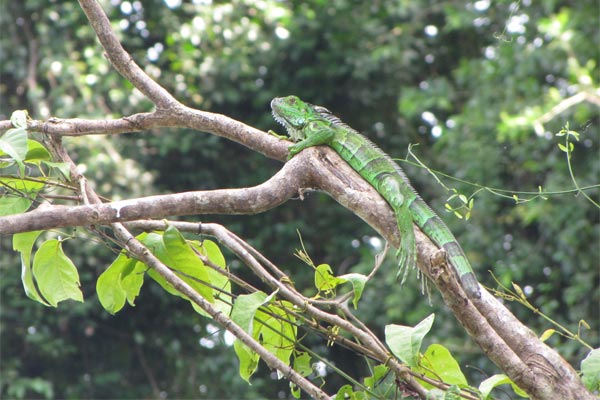
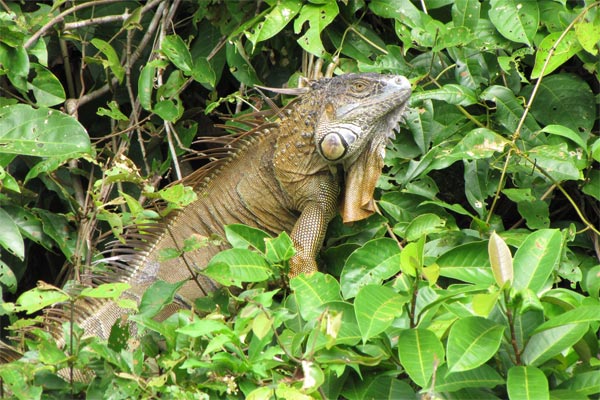
The river's edge in Tortuguero is a fine place for iguana spotting, many of them high up in the trees.
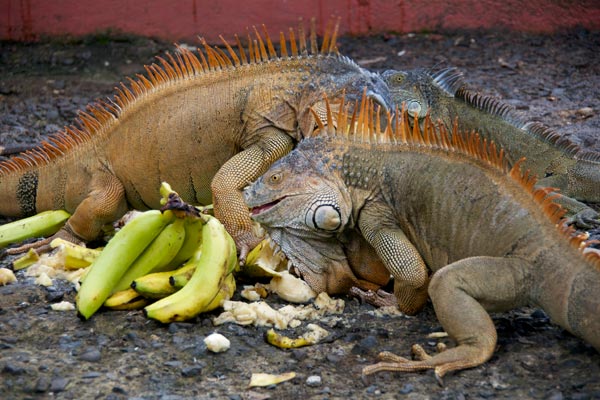
On the road between Sarapiqui and Mt. Arenal, our tour group stopped for a bathroom and ice cream break at a local iguana-themed establishment. An impressive "wild" population of iguanas maintained its size and health by gobbling the piles of bananas that they were regularly offered.
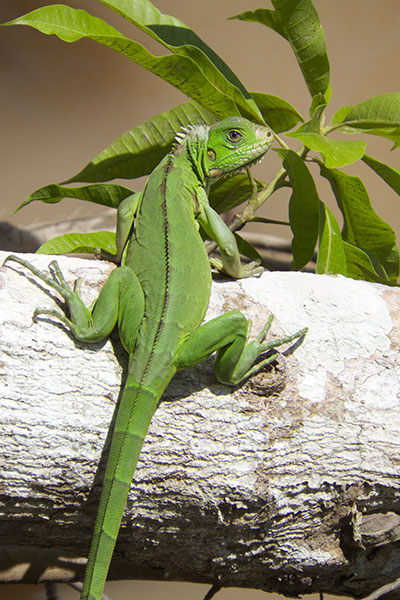
On the way between the Madre Selva and Santa Cruz field stations, we stopped at a little distillery along the river for a bathroom break. Also an iguana break, as it turned out.
Here is a complete list of the herps I saw in the wild on my 2014 MT Amazon Expeditions trip.
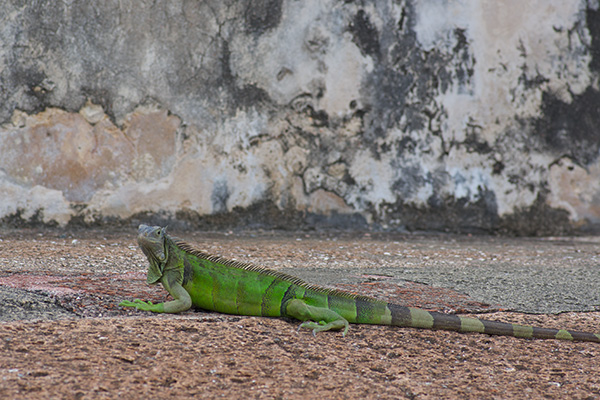

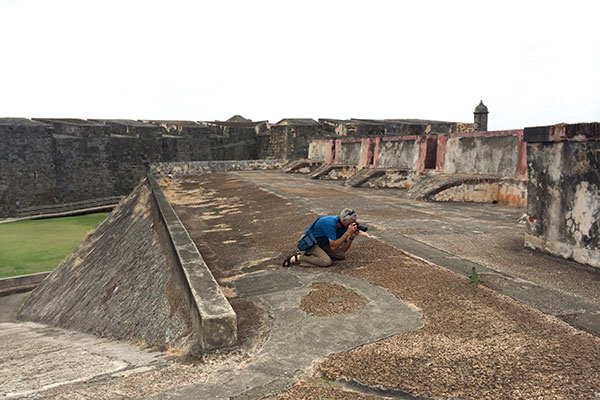
This basking iguana was the first herp I saw on a Caribbean cruise trip with my wife and her mother and sister. It was helping to guard the fort that guarded the land entrance to Old San Juan in olden days.
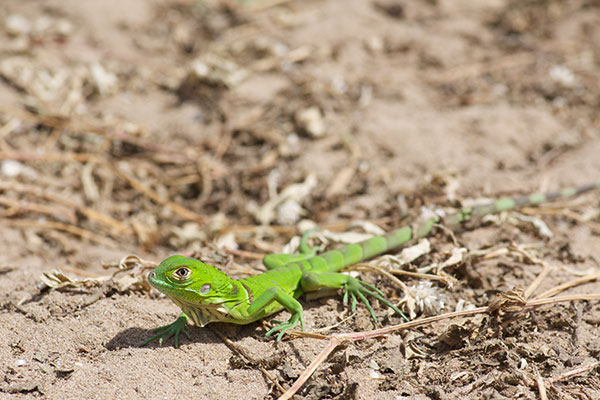
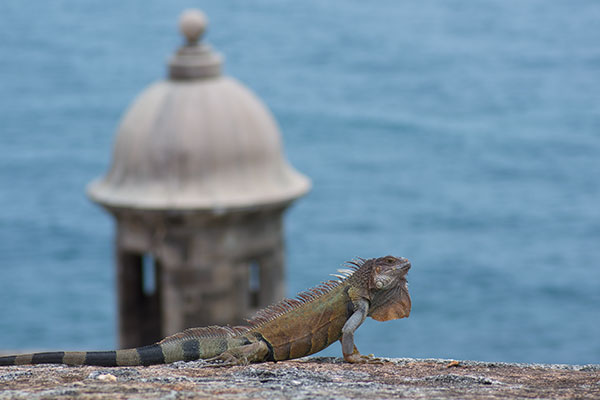
This proud iguana was helping to guard the fort that guarded the ocean entrance to Old San Juan in olden days. Compare and contrast with the iguana from a couple of days ago.
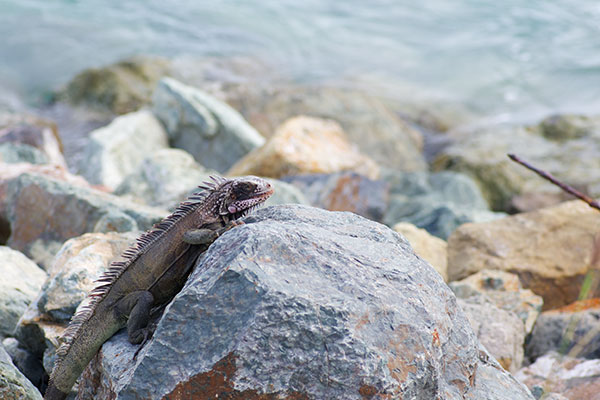
This not-particularly-attractive iguana apparently fantasized about moving to the Galápagos Islands.
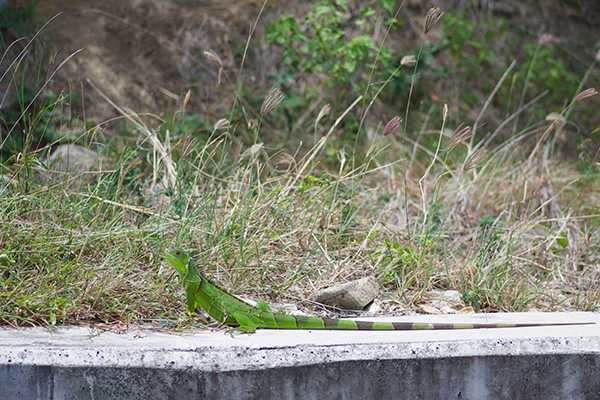
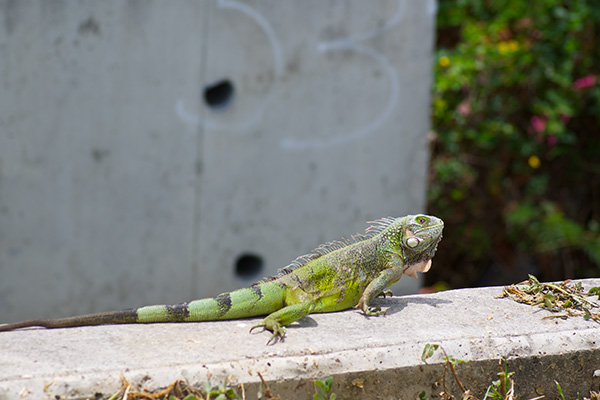
Historically Sint Maarten was home to the Caribbean's indigenous iguana, Iguana delicatissima, but that species has been extirpated from this island as well as many others, including at least Antigua, Barbuda, St. Kitts, Nevis, and Marie-Galante. There is however now a thriving population of the closely related Iguana iguana, which is native to Central America and South America. I saw a bunch of these, mostly along a canal that paralleled one of the main streets in town.
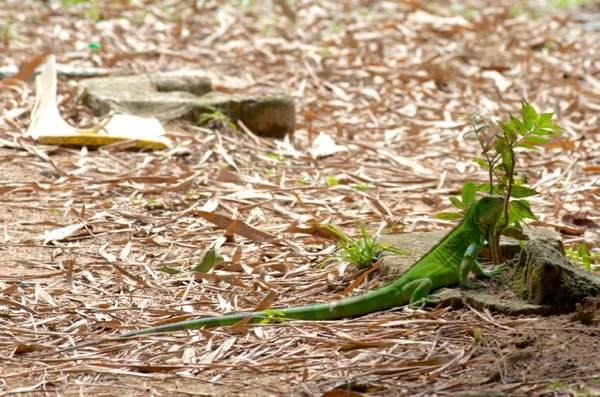
A population of wild iguanas were taking advantage of the free food and lodging at the zoo in Iquitos.
My Travelogues and Trip Lists page includes a complete list of the herps I saw in the wild on my 2016 MT Amazon Expeditions trip.

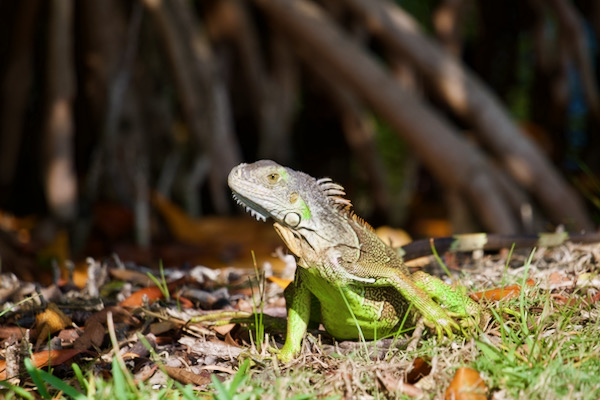
Fairchild Tropical Garden remains an excellent place to practice photographing iguanas.
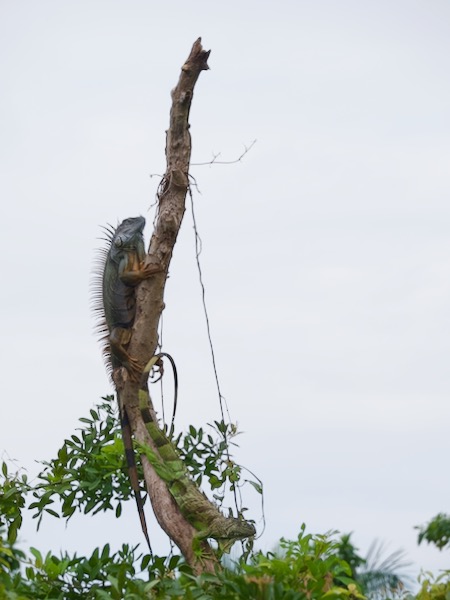
The big maie iguana on top basked on this perch every day for a week or so at least. Its partner was nowhere to be seen after this first day.
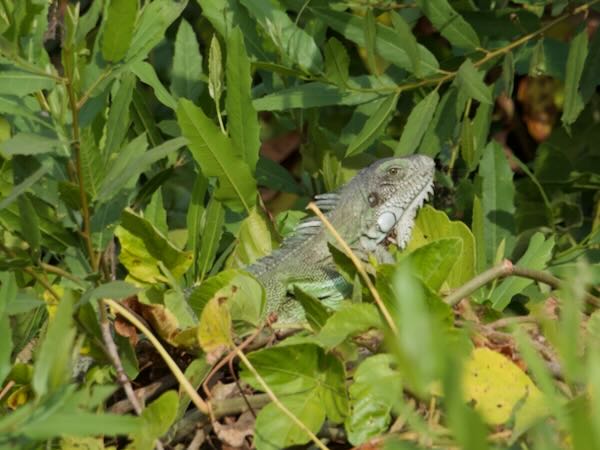
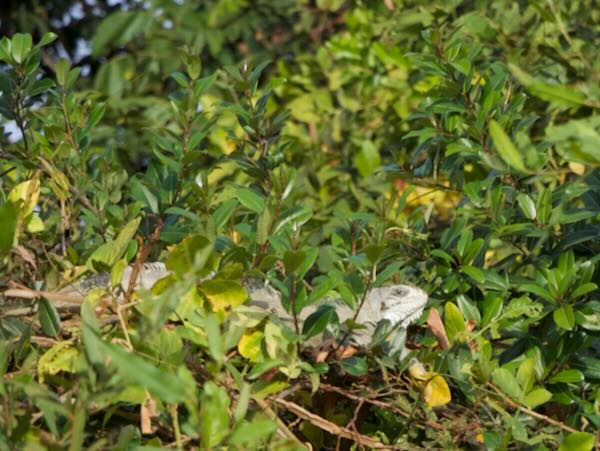
Throughout Central and South America (and now South Florida), wherever there are waterways, there will be Iguana iguana lurking in the trees nearby.
Here is a (fairly short) list of all the reptiles and frogs I saw on this trip to the Pantanal in Brazil.
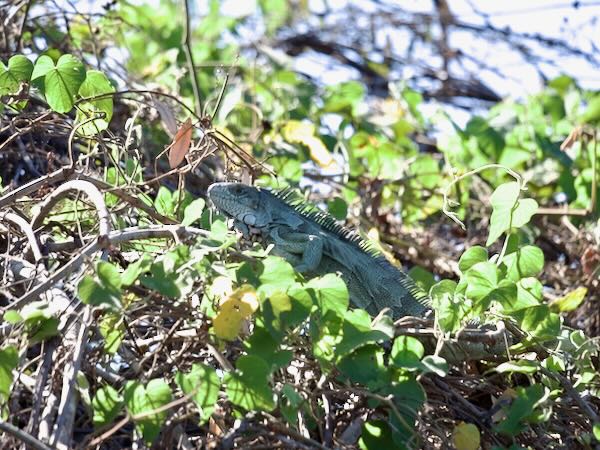
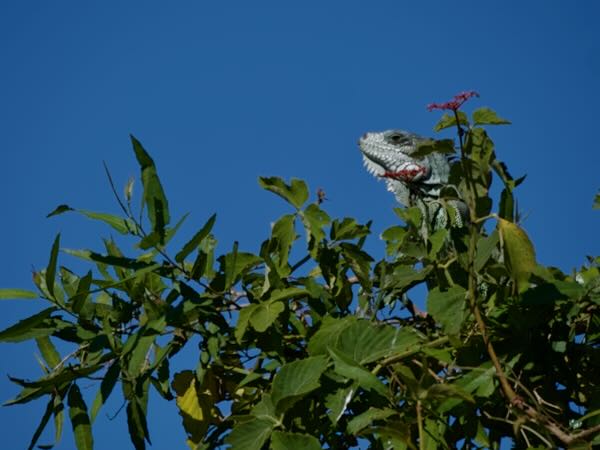
Many of the iguanas we saw here were a light gray-green color.
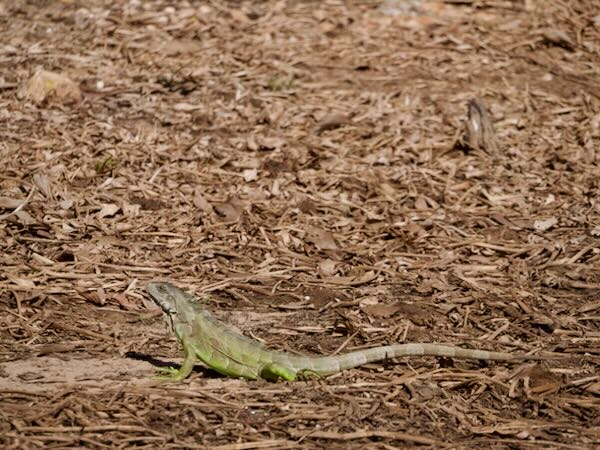
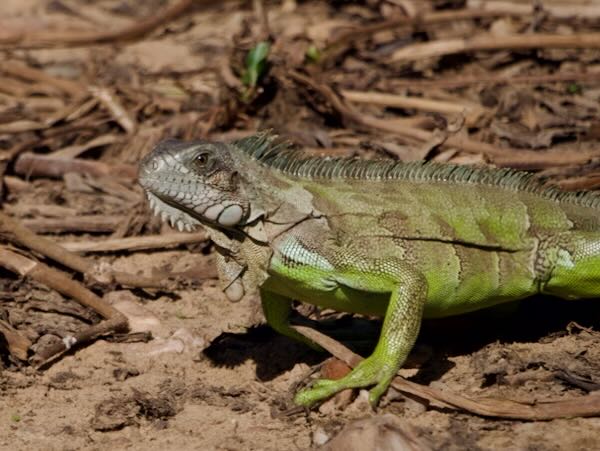
Some day, when Iguana iguana is split into ten different species, I will be ready.
Printed references:
- Ashton, R. E. Jr., Ashton, P. S. 1991. Handbook of Reptiles and Amphibians of Florida, Part Two: Lizards, Turtles, & Crocodilians, Revised Second Edition
- Bartlett, R. D., Bartlett, P. B. 1999. A Field Guide to Florida Reptiles and Amphibians
- Behler, J. L., King, F. W. 1979. The Audubon Society Field Guide to North American Reptiles & Amphibians
- Campbell, J. A. 1998. Amphibians and Reptiles of Northern Guatemala, the Yucatán, and Belize
- Conant, R., Collins, J. T. 1998. Peterson Field Guide to Reptiles and Amphibians of Eastern and Central North America, Third Edition, expanded
- Crother, B. I. (ed.) 2017. Scientific and Standard English Names of Amphibians and Reptiles of North America North of Mexico, with Comments Regarding Confidence in Our Understanding, Eighth Edition
- Lee, J. C. 2000. A Field Guide to the Amphibians and Reptiles of the Maya World: The Lowlands of Mexico, Northern Guatemala, and Belize
- Lee, J. C. 1996. The Amphibians and Reptiles of the Yucatán Peninsula
- Mckeown, S. 1996. A Field Guide to Reptiles and Amphibians in the Hawaiian Islands
- Rogner, M. 1997. Lizards
- Stafford, P. J., Meyer, J. R. 2000. A Guide to the Reptiles of Belize